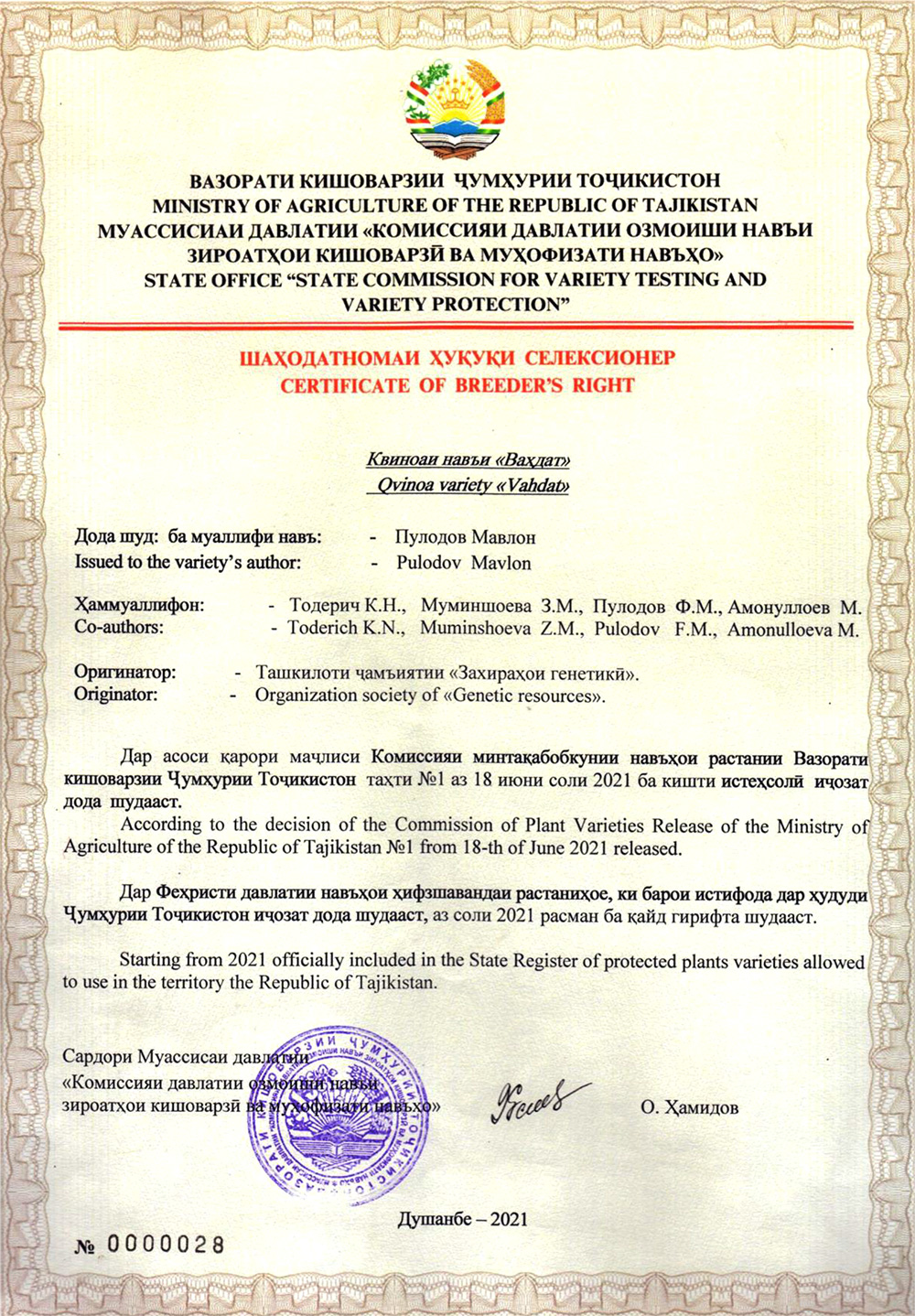Quinoa genotype from ICBA gets go-ahead for cultivation in Tajikistan
An early-maturing, high-yielding and nutrient-rich quinoa variety originating from seeds sourced from the International Center for Biosaline Agriculture (ICBA) has been approved for release in Tajikistan. After several years of evaluation, the new variety called “Vahdat” has proven to be salt- and heat-tolerant in various agro-ecological zones of the country.
“As the soils in the world’s drylands in countries like Tajikistan become more saline and as our climate changes, we need to adopt crops which can tolerate salt and heat,” said Dr. Kristina Toderich, a senior fellow at ICBA. “Quinoa has attracted worldwide interest because of its tolerance to harsh environments and high nutritional value but it has not been previously well-known in Tajikistan.”
Under a project financed by the Islamic Development Bank (IsDB) titled “Cross-regional Partnerships for Improving Food and Nutritional Security in Marginal Environments of Central Asia”, ICBA and partners assessed ways of integrating quinoa into local farming and food production systems in five Central Asian countries and Azerbaijan.
Tajikistan has dry and hot summers and severe cold winters. Due to soil salinity, strong winds and irrigation water deficits, only certain areas are suitable for agriculture.
In addition to constraints on sustainable agriculture, the country is also faced with nutrition insecurity. Low dietary diversity, particularly of good quality protein and micronutrient-rich food, affects rural populations, especially children, and contributes to the high rates of stunting observed among those living in poor households.
Researchers from ICBA identified quinoa as a crop which could be promising in providing food and nutrition security to local communities. Quinoa can adapt to a wide range of conditions and is well suited for marginal environments. It is also gluten-free and rich in protein, fatty acids and micronutrients.
“We set up screening trials for five genotypes of quinoa at various locations in Tajikistan,” Dr. Kristina Toderich said. The trials were conducted by researchers of the Center of Genetic Resources of the Tajik Academy of Agricultural Sciences. “One of those genotypes, called ICBA-Q5, proved to be promising in terms of salt and drought tolerance, as well as grain production and quality. Therefore, we advanced it for further trials.”
ICBA-Q5 became known as “Vahdat”, which means “unity” in Tajik, and was presented to the State Commission for Variety Testing and Variety Protection for further evaluation. Farmers were included in the evaluation by using evolutionary participatory breeding (EPB) methods which empower seed producers and farmers.
After a few years of evaluation, the State Commission for Variety Testing and Variety Protection approved and released “Vahdat” for national distribution.
It will take time before “Vahdat” will be in widespread cultivation across the country. Work is now under way to multiply seed, but there is also a need to focus on awareness since farmers are not familiar with quinoa. “However, when properly cultivated, ‘Vahdat’ could contribute to an improvement of nutrition security of people living in marginal areas,” added Dr. Kristina Toderich. “In particular, it can become important in places where growing traditional food crops such as wheat, corn and potato is becoming uneconomical due to the growing impact of climate change and the increased salinization of land and water.”

